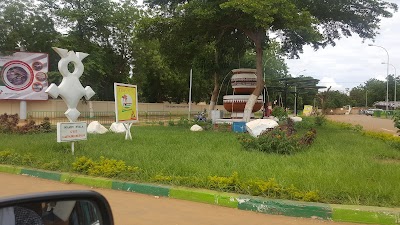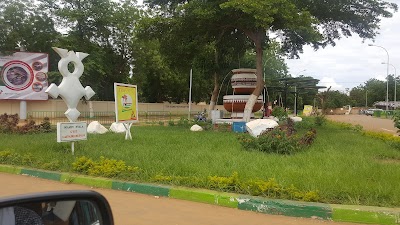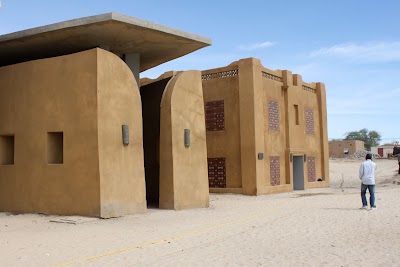Gao Museum (متحف غاو)
Overview
The Gao Museum, situated in the historic Taoudénit Region of Mali, stands as a vital cultural and historical institution, offering visitors an enchanting glimpse into the rich heritage of the area. Nestled in the heart of one of West Africa's oldest cities, Gao, this museum is an essential destination for any traveler eager to explore the legacies and contributions of this storied city.
Gao has a fascinating history as a significant commercial hub, particularly during the height of the trans-Saharan trade routes. Once the capital of the Gao Empire in the 9th century and later a key part of the influential Songhai Empire, the Gao Museum serves as a custodian of this deep-rooted history, preserving and showcasing artifacts that span several centuries.
One of the museum’s most captivating sections is its collection of ancient manuscripts. These invaluable documents shed light on the trade, governance, and daily life of Gao's historical inhabitants. Written in Arabic and indigenous scripts, they underscore the region's scholarly and commercial achievements. This display is especially noteworthy, as Gao was a vibrant center of Islamic learning, rivaling the renowned Timbuktu.
The museum also prominently features artifacts from the Songhai Empire, which flourished from the 15th to the 16th centuries. Visitors can admire traditional weaponry, exquisite jewelry, and intricately designed pottery from this period. These items not only showcase the craftsmanship of the Songhai people but also reflect their social and economic structures. The unique designs found on pottery pieces often narrate stories of trade relations and cultural exchanges with neighboring regions.
Beyond the museum walls, visitors can explore historical buildings and ruins that enhance the immersive experience. The nearby Tomb of Askia, a UNESCO World Heritage site, provides additional context to the museum's exhibitions. This pyramid-like structure, constructed by Askia Mohamed, a ruler of the Songhai Empire, exemplifies the architectural brilliance and spiritual significance of the time.
For those seeking a deeper understanding, the Gao Museum offers guided tours that dive into the narratives behind the artifacts. Knowledgeable guides, often local historians or scholars, provide a comprehensive overview of how Gao evolved over time and its pivotal role in the broader Saharan and West African history. These tours are particularly engaging for those who appreciate detailed storytelling and contextual learning.
In addition to its historical exhibits, the museum hosts cultural events and educational programs aimed at preserving and promoting Malian heritage. Visitors can participate in traditional music performances, craft workshops, and lectures, offering a hands-on experience of the local culture.
Interestingly, the museum's architecture itself represents a blend of traditional Sahelian design and modern elements. Constructed with locally sourced materials, the building harmonizes beautifully with the surrounding desert landscape, providing a picturesque backdrop for memorable photographs. The use of mudbrick construction highlights the traditional building techniques that have been employed in the region for centuries.
For those planning a visit, the museum is conveniently located near other historical sites and amenities in Gao. Whether you are a history enthusiast, an archaeology buff, or simply a curious traveler eager to learn about Mali's rich cultural tapestry, the Gao Museum promises a fulfilling and educational experience.
In summary, the Gao Museum acts as a crucial link to Mali's past, preserving the legacies of ancient empires and the trans-Saharan trade. Its comprehensive exhibits, interactive tours, and cultural programs offer a rich, layered understanding of the region's significance. A visit to the Gao Museum is not just an exploration of Mali’s history; it is also a celebration of its enduring cultural legacy.







